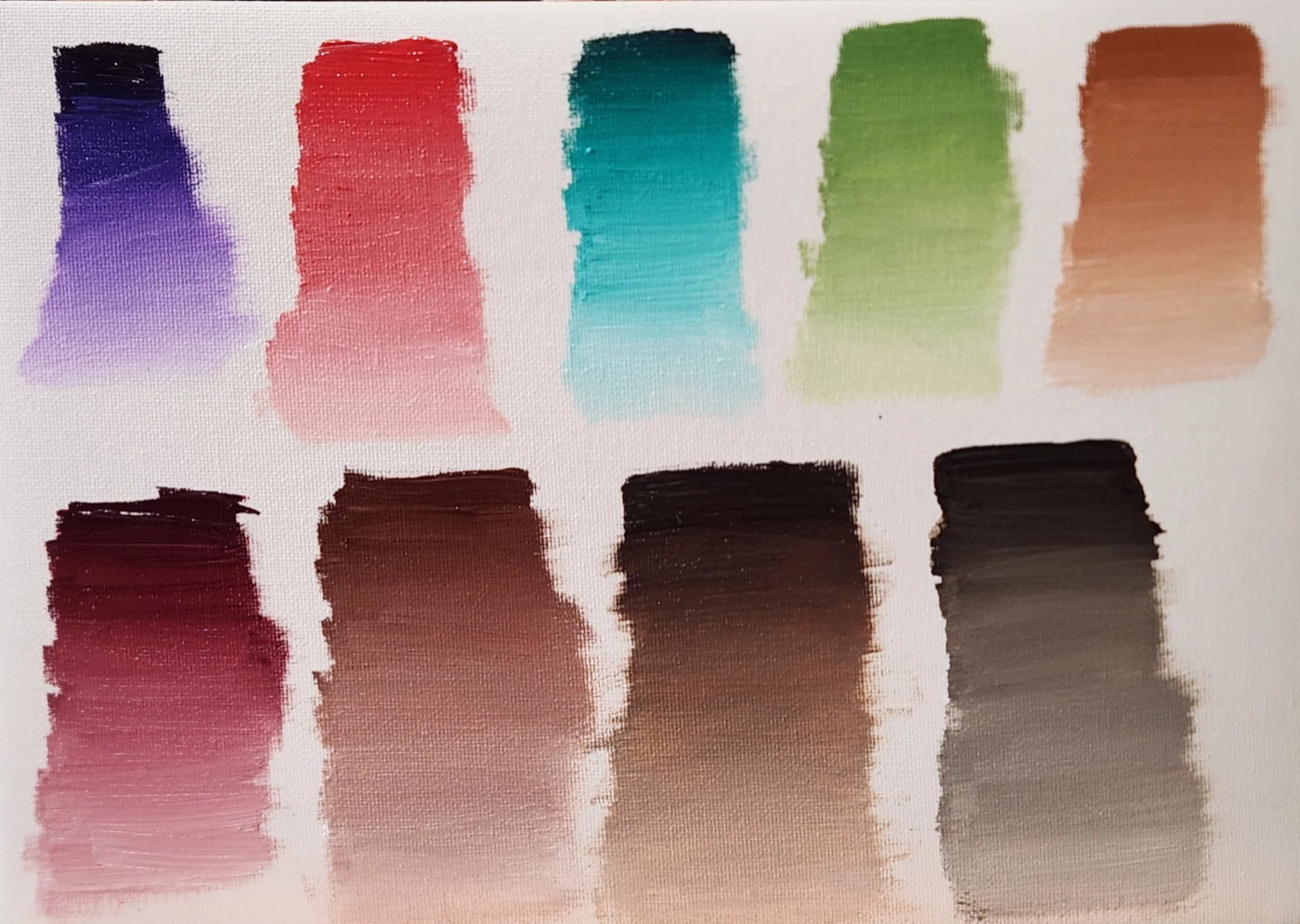Tips and Ideas
on outdoor equipment and techniques
Pochade Box
Pochade boxes were popular in the past, they date from the 18th and 19th centuries.
The traditional box is wooden, with a hinged lid at a suitable angle to use as an easel, and also to store paintings. The palette slides to one side for access to the storage space for paints and brushes.
This design was developed from a photo in an old book.
John
Drawing a straight line
I remember Pat saying to me that if you want to draw a straight line freehand, don’t look at the end of the pencil, look at where you want the line to go.
Margaret
Easel Tray
Most portable easels lack a tray to hold drawing or painting materials.
Here is a design for a homemade tray that simply fits over the front of an upright easel and wedges into place. It is quite sturdy and not large or heavy enough to tip the easel forward.
It is cut from medium-density fibreboard, 32cm by 40cm. The size of the cuts into the board for attaching it will depend the dimensions of the easel legs. What holds it horizontal are the pieces of timber glued on the underside of the tray, which cause it to wedge firmly against the legs. Holes have been drilled to hold brushes.
Maybe an inventive person can think of more or different features!
Margaret



Which White?
Some of our lunch time discussion has concerned the choice of white oil paints.
Lead white has become quite expensive, and it can be difficult to obtain, due to its very high toxicity. But some painters still choose to use it, due to its ability to lighten colours without bleaching them.
Recent studies on Zinc white (zinc oxide) have received wide attention on the internet. Although Zinc white had become a safer alternative to Lead white, the studies showed mixtures with Zinc white oil paint quickly become brittle and have severe cracking; it also delaminates, or peels off. Watercolour and acrylics are not affected.
Although Titanium white is a “must have”, it has a very strong cooling effect, and gives a chalky appearance if not controlled well.
Some companies produce a white with Barium Sulphate (sold as Barite or Tinting White), which is semi-transparent and has a low tinting strength. It is not intended for use as a pure white or for making very pale tints, but I found it can lighten colours while retaining their warmth, as shown in these photos.
Another alternative is Lithopone White, a compound of Barium Sulphate and Zinc Sulphide. It was developed in the 1870s as a substitute for the toxic Lead White, and was very popular in the early 1900’s. It’s described as “not as overpowering as Titanium White, but not as gentle as Zinc White”, and “a good alternative for oil painters who have concerns about the permanence of Zinc White, but don’t like the heavy opacity of Titanium White”.
If you have any ideas on this, or other topics, please let us know by using the “Share your tips and ideas” button.
John





0 Comments